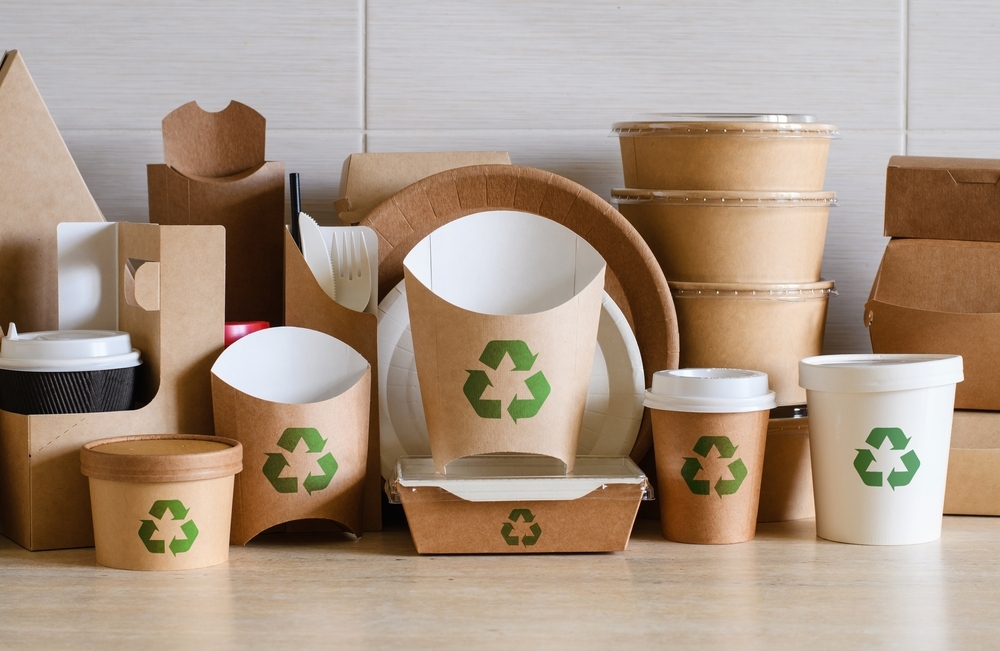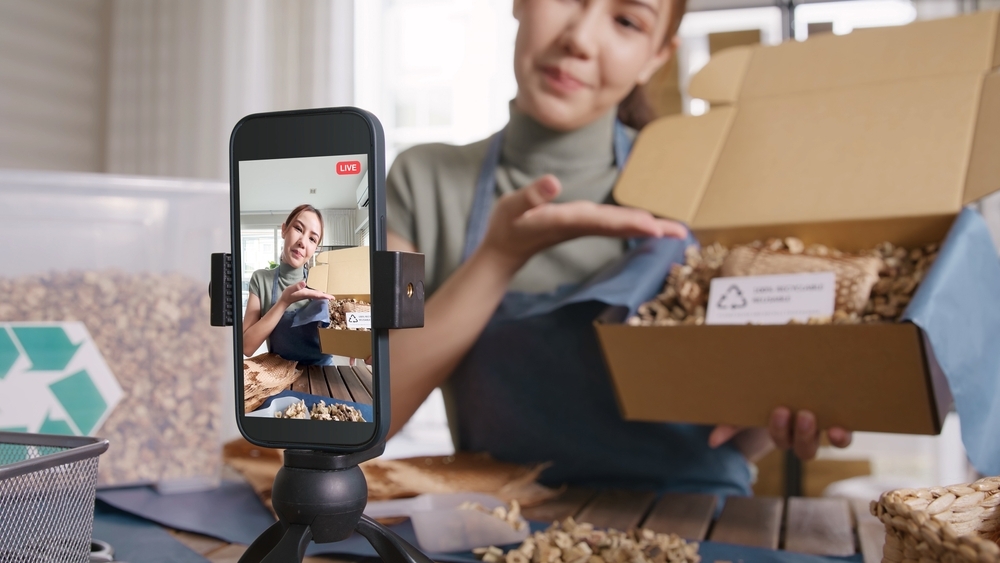Top Biobased Packaging Options for Takeaways: Eco-Friendly Choices for Your Food Business
By Morten Numrich · 26. April 2024
Streamlining the takeaway experience with an eye on sustainability?
Biobased packaging options for takeaways are not just a nod to environmental friendliness; they are a robust, practical choice for businesses aiming to align with modern ecological expectations.
This article explores the leading biobased materials that impress not just in their green credentials but also in their capability to serve and satisfy in the competitive food industry.
Understanding Biobased Packaging
 Biobased Food Packaging
Biobased Food Packaging
Biobased packaging is the new kid on the block when it comes to sustainable packaging solutions.
These are packaging options derived from biological sources rather than synthetic materials, offering an eco-friendly alternative to traditional plastic packaging.
This shift towards sustainable packaging practices, including the use of biobased materials, is part of a concerted effort to reduce the environmental impact and support healthier planetary conditions.
Materials commonly used in sustainable packaging include:
- Cardboard
- Paper
- PLA (polylactic acid)
- Cellulose
These materials are not only kinder to the environment but also provide practical and efficient green packaging solutions for food products.
This is why more and more businesses are making the switch to biobased packaging – it’s a win-win situation!
What is Biobased Packaging?
So, what exactly is biobased packaging? It’s pretty straightforward.
Biobased packaging refers to materials derived from natural sources such as:
- paper
- wood
- bamboo
- agricultural waste
- bioplastics
These natural sources are typically renewable resources like corn starch or sugar cane, making them a sustainable choice for packaging needs.
One standout in the biobased packaging arena is Polylactic acid (PLA).
Recognized for its safety by the FDA, PLA is a bioplastic that’s notable for its biodegradability, good barrier properties, and adjustable physical properties making it ideal for food packaging.
Environmental Benefits of Biobased Packaging
Switching to biobased packaging doesn’t just make good business sense; it’s also great for the environment.
Biobased packaging helps to reduce reliance on fossil fuels and lower greenhouse gas emissions during production.
Just ask The White Rabbit Pizza Co. They made the switch to biobased packaging and estimated it saved them around 18,700kg of CO2 emissions annually – that’s the equivalent of driving around the world twice.
Some biobased packaging materials, such as NEOPS, even have a lower carbon footprint compared to traditional materials like EPS. Plus, PLA, a bioplastic derived from renewable resources, is used in food packaging for its biodegradability and recyclability.
Comparing Biobased and Traditional Plastic Packaging
When you compare biobased packaging with traditional plastic options, some key differences come to light. These differences lie in the material source and production processes.
While not all biobased plastic packaging is easily recyclable, those designed to be compatible with current recycling technologies can be recycled through processes like crushing and compacting.
This means that biobased packaging not only reduces the use of non-renewable resources but also contributes to the recycling culture.
Popular Biobased Materials for Takeaway Packaging
 Biodegradable Packaging
Biodegradable Packaging
Biobased materials are making waves in the takeaway packaging scene. These natural substances, known for their sustainability, are part of a market expected to grow significantly.
Common biobased materials such as bagasse, PLA, and paper/cardboard are favorites for creating eco friendly packaging due to their sustainable properties and ability to reduce food waste.
They’re not just eco-friendly; these materials are also versatile. From bamboo salad bowls and noodle boxes to soup containers with lids, the possibilities are endless when it comes to eco friendly packaging.
Bagasse
Ever heard of bagasse? It’s a residual fibrous material that comes from the processing of sugarcane or sorghum and is used to produce eco-friendly, compostable, and robust packaging for food items.
The production process involves molding the residual fibers of sugarcane after juice extraction into containers and tableware using high heat and pressure.
What makes bagasse a crowd favorite? Its compostability, biodegradability, and the ability to effectively contain hot, wet, and oily foods, making it a versatile option for takeaway packaging.
PLA (Polylactic Acid)
PLA, short for Polylactic Acid, is another player in the biobased packaging game. Derived from renewable resources such as maize and sugarcane, PLA offers competitive mechanical properties and is biodegradable, making it suitable for food packaging applications.
One of PLA’s standout features is its use in kraft menu boxes. PLA coatings are applied to these boxes to ensure they are greaseproof and leak-free, enhancing their functionality in takeaway food packaging.
Paper and Cardboard
Let’s not forget about the classics – paper and cardboard, especially recycled paper. These renewable materials have a lower environmental impact compared to plastics and are widely preferred for their recyclability.
There’s a lot you can do with paper and cardboard when it comes to food packaging. From bags for loose foods to cartonboard for a variety of food products, the applications are diverse.
Plus, paper and cardboard offer essential mechanical protection, making them ideal for wrapping delicate items like fruits and eggs.
Implementing Biobased Packaging in Your Food Business
 Reusable Packaging use in a store
Reusable Packaging use in a store
So, you’re sold on the idea of biobased packaging. But how do you go about implementing it in your food business? It’s not as daunting as it might seem.
The key🔑 is to assess your current packaging needs, source reliable suppliers, and educate your staff and customers.
Biobased packaging materials must also possess specific physical and mechanical properties to function optimally in safeguarding food safety and longevity.
This means you’ll need to consider processing techniques such as wet and dry processing to customize the final materials for specific application requirements.
Educating Staff and Customers
With the high amount of plastic waste from food packaging, enhancing the shelf life of perishables, and consumer expectations for environmental responsibility, educating your staff and customers about the benefits of biobased packaging is crucial.
Training on biobased packaging should include:
- Proper presentation and disposal of materials
- Ensuring that the packaging conforms to compliance
- Presenting clear user instructions
- Carrying verified claims for disposal or repurposing
Overcoming Challenges with Biobased Packaging
While biobased packaging offers many benefits, it’s not without its challenges. One of the main hurdles is that biobased packaging may not perform as well as traditional plastics.
This could potentially lead to issues such as diminished durability or protection for the packaged goods.
But don’t let this deter you. With research advancements and food packaging testing, maintaining safety and quality standards in biobased packaging materials is achievable.
Ensuring Product Quality
Ensuring product quality when using biobased packaging is crucial. Thanks to research advancements, more efficient biobased materials have been developed, providing better product protection.
Food packaging testing is also essential for ensuring safety and quality. Methods include both chemical and physical tests to assess material compatibility and durability.
However, there are also considerations to be made around potential allergen risks, especially for biobased packaging materials made from protein-based raw materials.
Frequently Asked Questions
What is biobased packaging?
Biobased packaging is made from natural sources like paper, wood, bamboo, agricultural waste, and bioplastics – it’s basically packaging with an eco-friendly twist!
What are the environmental benefits of biobased packaging?
Biobased packaging helps reduce reliance on fossil fuels and lowers greenhouse gas emissions during production, making it a more environmentally friendly option.
What are some popular biobased materials for takeaway packaging?
When it comes to eco-friendly takeaway packaging, bagasse, PLA, and paper/cardboard are popular choices. Opt for these biobased materials for a sustainable and earth-friendly option.

